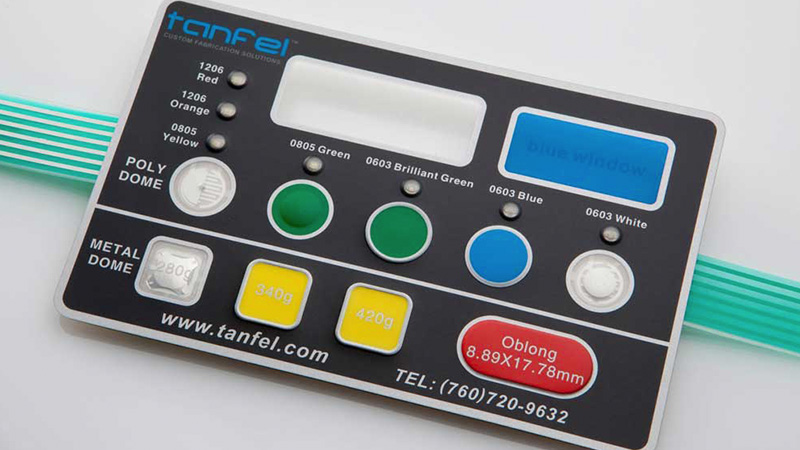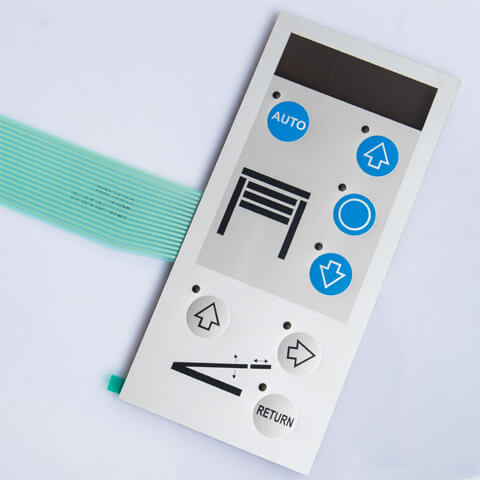The Perks of Membrane Switches Over Standard Switches in Tough Settings
The Perks of Membrane Switches Over Standard Switches in Tough Settings
Blog Article
Why Membrane Layer Changes Are Necessary for Long Lasting Control Systems
Membrane layer switches play an essential duty in ensuring the longevity and reliability of control systems across various sectors. Their special building and construction enables them to withstand challenging environmental aspects such as humidity, temperature extremes, and physical wear. This strength not just prolongs the life expectancy of the systems they serve yet likewise lessens maintenance requirements. As we explore the multifaceted advantages of membrane layer switches, it becomes apparent that their significance transcends mere performance, affecting individual experience and operational performance. What more effects do these attributes hold for the future of control system style?
Summary of Membrane Layer Switches
Membrane buttons are flexible and reliable components generally utilized in numerous digital control systems. The visuals overlay offers both practical and aesthetic layout, while the spacer layer guarantees that the switches are triggered only when pressed.
Membrane buttons are commonly preferred in applications needing a compact and light-weight design, making them optimal for handheld gadgets, clinical equipment, and industrial equipment. They can be personalized to fulfill details customer demands and can integrate different attributes such as backlighting, tactile feedback, and multiple colors. Furthermore, membrane layer switches are immune to dirt, dampness, and pollutants, making them suitable for settings where sturdiness is crucial.
Benefits of Longevity
In lots of applications, the durability of membrane changes offers substantial benefits that enhance their overall efficiency and dependability. These switches are designed to hold up against extreme settings, making them excellent for use sought after conditions such as high humidity, severe temperature levels, and exposure to chemicals. Their robust building helps to prevent damage from physical effect, ensuring resilient capability and decreasing the need for frequent replacements.
In addition, membrane buttons are immune to use and tear, which is critical in applications where constant communication takes place. This toughness translates to lower maintenance prices, as companies gain from lowered downtime and fewer service disruptions. Furthermore, the encapsulated design of membrane changes safeguards interior components from dust and dampness access, further adding to their life expectancy.
Another advantage is their capacity to keep consistent efficiency with time. With a high resistance for mechanical stress, these buttons protect their tactile feedback and electrical integrity, ensuring user satisfaction. Inevitably, the durability of membrane switches over not just boosts functional efficiency however additionally promotes self-confidence in their reliability, making them a recommended selection for control systems throughout different industries.
Applications in Various Industries
Sturdy control systems using membrane layer buttons find comprehensive applications across a variety of sectors, each benefiting from the special characteristics these switches offer. In the clinical sector, membrane layer buttons are important for gadgets such as person displays and diagnostic tools, where reliability and simplicity of cleansing are extremely important. Their resistance to wetness and impurities guarantees they maintain performance in sterilized settings.
The vehicle market leverages membrane layer switches for dashboard controls and infomercial systems, where they offer streamlined, low-profile interfaces that improve user experience. These switches are also created to hold up against extreme conditions, including exposure to extreme temperatures and resonances.
In industrial settings, membrane buttons are generally utilized in equipment control board, offering responsive responses and longevity required for high-usage applications. Their capacity to stand up to chemicals makes them suitable for producing atmospheres where spills and impurities are frequent.

Consumer electronic devices, such as cooking area home appliances and remote controls, also use membrane buttons for their convenience and cost-effectiveness. Generally, the flexibility and robust nature of membrane switches over make them essential across various fields, making certain reliable operation and long life in control systems.
Style and Aesthetic Charm
While functionality is vital, the layout and visual allure of control systems geared up with membrane layer switches play an important role in user interaction and general experience (membrane switch). The visual layout of these switches can considerably affect user assumption and interaction. A properly designed membrane layer switch enhances the beauty of the gadget, making it much more enticing to customers and promoting a link between the user and the item
Membrane switches use a lot of versatility in layout, allowing manufacturers to customize graphics, shades, and structures to straighten with brand name identification and item aesthetics. The usage of dynamic shades and distinct patterns can draw focus, while tactile feedback can reinforce the user's interaction with the tool. In addition, the ability to integrate LED signs and backlighting into the membrane layer go right here button style offers both functional and aesthetic benefits, boosting visibility and use in different settings.

Enhancing User Experience

Moreover, membrane layer switches can be tailored to incorporate graphical interfaces, boosting use by providing information in a clear and intuitive manner (membrane switch). This personalization can include icons, labels, and shade coding that guide users through facility performances effortlessly. In addition, their adaptability enables integration in different atmospheres, guaranteeing regular performance whether in industrial equipment or customer electronics
The toughness of membrane layer switches additionally plays a critical duty in individual experience. By withstanding harsh conditions and expanded usage, these buttons minimize the possibility of system failings, hence advertising dependability and user self-confidence. Eventually, the calculated use of membrane changes not just raises capability but additionally considerably improves individual interaction with control systems, making them a vital part in modern design.
Verdict

Report this page